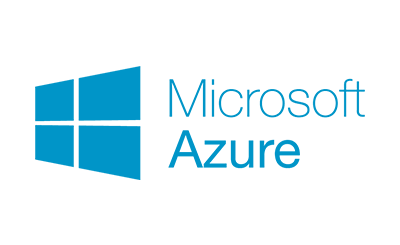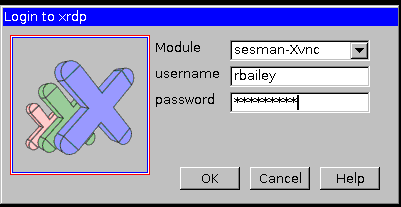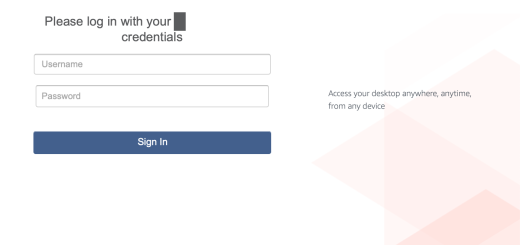VMware PowerCLI One-Liners
Manage your Vmware Infrastructure with the power of a single command!
I love VMware One Liners, I first saw them on the Alan Renaulf blog, and I was amazed that you could do such massive requests with so little code. So I spent a lot of time trying to create my own; some I have adapted from others, but most of these were created by me as I am the definition of a Lazy SysAdmin, not lazy as in I don’t do any work, Lazy as in I hate doing repeatable work manually.
These commands will save you a mountain of time; despite the formatting of this website, they should all copy as single-line commands.
Find VMs that are powered off.
Get-VM | where {$_.powerstate -eq "PoweredOff"} | Sort-Object | get-harddisk | ft parent, capacityGB, Filename -autosizeFind Vms CREATED last X days.
This one-liner does exactly what it says, and it will search the Get-VIEvent logs and calculate VMs created in the last 10 days. Change the integer at the end of the command to vary the search criteria.
Get-VIEvent -maxsamples 10000 |where {$_.Gettype().Name-eq "VmCreatedEvent" -or $_.Gettype().Name-eq "VmBeingClonedEvent" -or $_.Gettype().Name-eq "VmBeingDeployedEvent"} |Sort CreatedTime -Descending |Select CreatedTime, UserName,FullformattedMessage -First 10Find Vms REMOVED last X days.
This is very similar to the above command, except it looks for Servers deleted in the last 10 days
Get-VIEvent -maxsamples 10000 | where {$_.Gettype().Name -eq"VmRemovedEvent"} | Sort CreatedTime -Descending | Select CreatedTime, UserName, FullformattedMessage -First 10Get Time on all hosts.
This is useful to determine whether all your hosts are connecting to a reliable NTP source for their time.
get-vmhost | select Name,@{Name="Time";Expression={(get-view $_.ExtensionData.configManager.DateTimeSystem).QueryDateTime()}}Get Very Detailed VM Information
This command will give you details about a VM, such as a Name, How many CPUs, Operating System, Service Pack Level
Get-VM |Where {$_.PowerState -eq “PoweredOn“} |Sort Name |Select Name, NumCPU, @{N=“OSHAL“;E={(Get-WmiObject -ComputerName $_.Name-Query “SELECT * FROM Win32_PnPEntity where ClassGuid = ‘{4D36E966-E325-11CE-BFC1-08002BE10318}’“ |Select Name).Name}}, @{N=“OperatingSystem“;E={(Get-WmiObject -ComputerName $_ -Class Win32_OperatingSystem |Select Caption).Caption}}, @{N=“ServicePack“;E={(Get-WmiObject -ComputerName $_ -Class Win32_OperatingSystem |Select CSDVersion).CSDVersion}}Count How Many VMS are running on the hosts
This command will tell you how many VMs you have running on a host. Useful if you are looking at spreading server load throughout a cluster.
Get-VMHost | Select @{N="Cluster";E={Get-Cluster -VMHost $_}}, Name, @{N="NumVM";E={($_ | Get-VM).Count}} | Sort Cluster, NameList All VM’s disk space.
This command gets a list of your VMs and displays each disk path, capacity, and free space.
ForEach ($VM in Get-VM ){($VM.Extensiondata.Guest.Disk | Select @{N="Name";E={$VM.Name}},DiskPath, @{N="Capacity(MB)";E={[math]::Round($_.Capacity/ 1MB)}}, @{N="Free Space(MB)";E={[math]::Round($_.FreeSpace / 1MB)}}, @{N="Free Space %";E={[math]::Round(((100* ($_.FreeSpace))/ ($_.Capacity)),0)}})}Get Host Hardware information.
This is useful to under what host hardware you are managing. It will display the Hardware Vendor, CPU type, number of cores, number of CPU sockets, CPU speed, and Memory size
Get-VMHost |Sort Name |Get-View |Select Name, @{N=“Type“;E={$_.Hardware.SystemInfo.Vendor+ “ “ + $_.Hardware.SystemInfo.Model}},@{N=“CPU“;E={“PROC:“ + $_.Hardware.CpuInfo.NumCpuPackages + “ CORES:“ + $_.Hardware.CpuInfo.NumCpuCores + “ MHZ: “ + [math]::round($_.Hardware.CpuInfo.Hz / 1000000, 0)}},@{N=“MEM“;E={“” + [math]::round($_.Hardware.MemorySize / 1GB, 0) + “ GB“}}Query ESX Host Management Networks
This is useful to see what networks your hosts are mapped to.
Get-VMHost | Get-VMHostNetwork | Select Hostname, VMKernelGateway -ExpandProperty VirtualNic | Where {$_.ManagementTrafficEnabled} | Select Hostname, PortGroupName, IP, SubnetMaskQuery ESX Host vMotion Networks
This is useful to see what vMotion networks your hosts are mapped to.
Get-VMHost | Get-VMHostNetwork | Select Hostname, VMKernelGateway -ExpandProperty VirtualNic | Where {$_.vMotionEnabled} | Select Hostname, PortGroupName, IP, SubnetMaskQuery ESX Host DRS Status
A quick command that states the host DRS status – can be run against multiple hosts if needed.
Get-VMHost | Get-Cluster | Select Name, DrsEnabled, DrsMode, DrsAutomationLevelCheck HA Status Levels
This command will check the High Availability status on an ESX host or Cluster.
Get-VMHost | Get-Cluster | Select Name, HAFailoverLevel, HARestartPriority, HAIsolationResponseGet ESX host’s Name, IP, Subnet, Gateway, and DNS configuration.
Get-VMGuestNetworkInterface –VM VMNAME | Select VM, IP, SubnetMask, DefaultGateway, DnsGet a Multipath Policy of mapped storage.
Get-VMHost | Get-ScsiLun | Select VMHost, ConsoleDeviceName, Vendor, MultipathPolicyGet ESX host NTP Configuration settings.
Get-VMHost | Sort Name | Select Name, @{N=”NTP”;E={Get-VMHostNtpServer $_}}Get Dell Service Tags
I primarily use Dell Service tags in my day job; this tool is priceless if you are too lazy to walk to the data centre
Get-VMHost | Get-View | foreach {$_.Summary.Hardware.OtherIdentifyingInfo[3].IdentifierValue}Get ESX name and the Dell Service Tag.
Get-VMHost | Get-View | Select Name, @{N=”Service Tag”;E={$_.Summary.Hardware.OtherIdentifyingInfo[3].IdentifierValue}}This will dump the Hostname and the Dell Service Tag values across all 3 identifiers.
Get-VMHost | Sort Name | Get-View | Select Name, @{N=”Tag 3”;E={$_.Summary.Hardware.OtherIdentifyingInfo[3].IdentifierValue}}, @{N=”Tag 2”;E={$_.Summary.Hardware.OtherIdentifyingInfo[3].IdentifierValue}}, @{N=”Tag 1”;E={$_.Summary.Hardware.OtherIdentifyingInfo[3].IdentifierValue}}Get ESX Host BIOS version and date(s)
Get when planning firmware updates on your infrastructure
Get-View -ViewType HostSystem | Sort Name | Select Name,@{N="BIOS version";E={$_.Hardware.BiosInfo.BiosVersion}}, @{N="BIOS date";E={$_.Hardware.BiosInfo.releaseDate}}That’s it. Thanks for taking the time to read this article. if you have any questions or feedback, please write in the comment section below.




Recent Comments